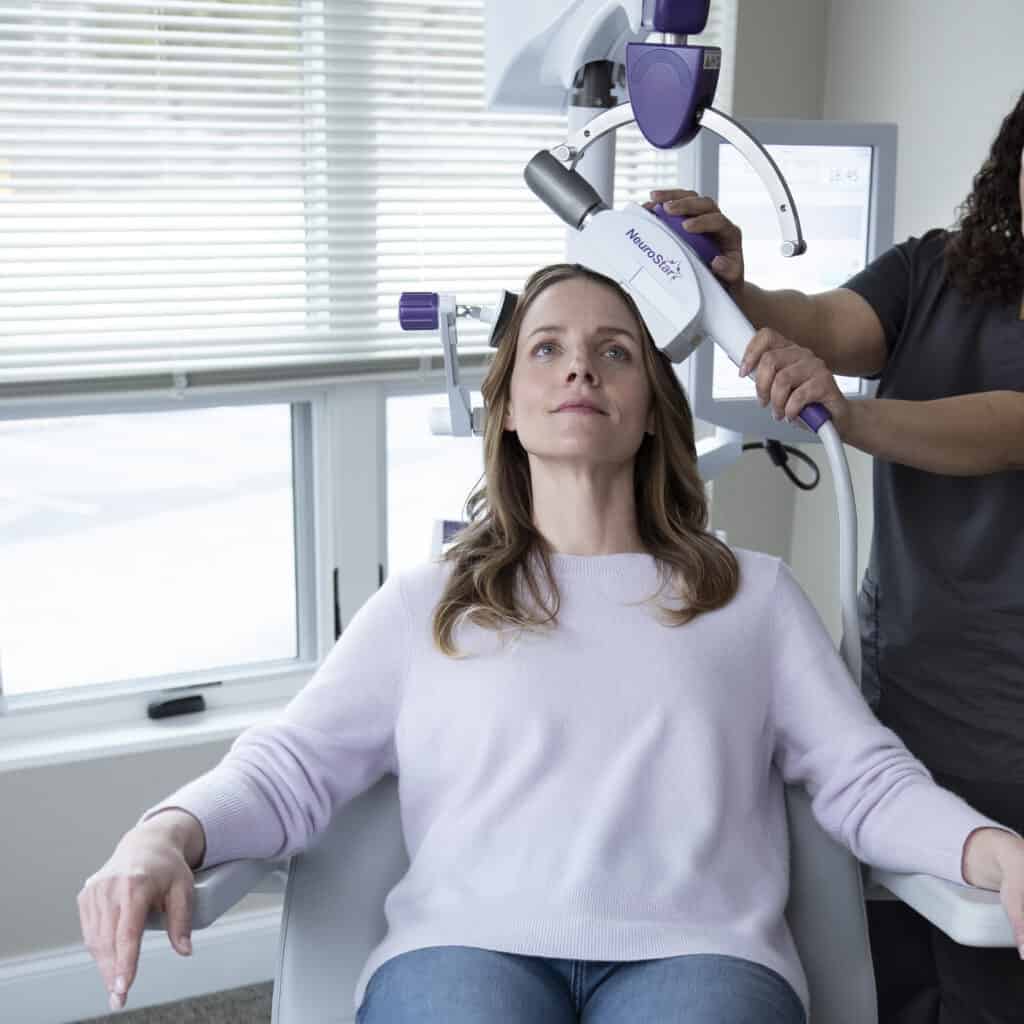TMS Therapy For Anxiety / Migraines
Transcranial magnetic stimulation (TMS) emerges as a promising procedure for alleviating anxiety. By positioning an electromagnetic coil near the skull, TMS delivers magnetic pulses into the brain, affecting nerve cell activity in regions associated with mood regulation. This modulation of brain activity holds potential for ameliorating anxiety symptoms.
While occasional anxiety is common, persistent or frequent feelings of anxiety could indicate an underlying anxiety disorder. Although psychotherapy and medications are conventional treatments, individuals who do not respond adequately to these options may turn to TMS.
TMS harnesses a magnetic field to induce an electric current, targeting specific brain areas implicated in mental health conditions. In this article, we delve into the procedure of TMS and explore its potential as a treatment for anxiety.
TMS – Anxiety
The NeuroStar Advanced Therapy System is specifically designed for addressing depressive episodes and reducing anxiety symptoms in adult patients diagnosed with Major Depressive Disorder (MDD). This treatment is particularly beneficial for individuals who have not achieved satisfactory improvement through previous antidepressant medication treatments during their current depressive episode. Additionally, NeuroStar therapy may be effective for those experiencing comorbid anxiety symptoms alongside their depression.
TMS – Migraines
Migraine, a prevalent neurological disorder, is characterized by recurrent, often intense headaches accompanied by symptoms such as nausea, vomiting, and sensitivity to light and sound. This condition affects around 12% of the general population, with a higher incidence among females than males. The pathophysiology of migraine is intricate, with cortical spreading depression (CSD) playing a pivotal role in central and peripheral sensitization.
CSD involves a depolarization wave followed by a slower neural inhibition wave, typically originating in the occipital cortex and spreading to other cortical areas at a rate of 3–6 mm per minute. Transcranial Magnetic Stimulation (TMS) emerges as a non-invasive technique that delivers brief magnetic pulses to stimulate brain tissue beneath the scalp. Unlike surgical interventions or implants, TMS offers a non-invasive approach to altering brain activity and adaptability in the targeted area.
TMS has the potential to influence CSD by modifying the balance between excitation and inhibition in the brain’s cortex. This suggests that TMS may hold promise in the management of migraines by modulating key neurological processes implicated in the condition.

Try TMS – A Proven Alternative Treatment for Depression
The 9-question Patient Health Questionnaire (PHQ-9) is a diagnostic tool introduced in 2001 to screen adult patients in a primary care setting for the presence and severity of depression. It rates depression based on the self-administered Patient Health Questionnaire (PHQ). The PHQ is part of Pfizer’s larger suite of trademarked products, called the Primary Care Evaluation of Mental Disorders (PRIME-MD). The PHQ-9 takes less than 3 minutes to complete and simply scores each of the 9 DSM-IV criteria for depression based on the mood module from the original PRIME-MD. Primary care providers frequently use the PHQ-9 to screen for depression in patients.

